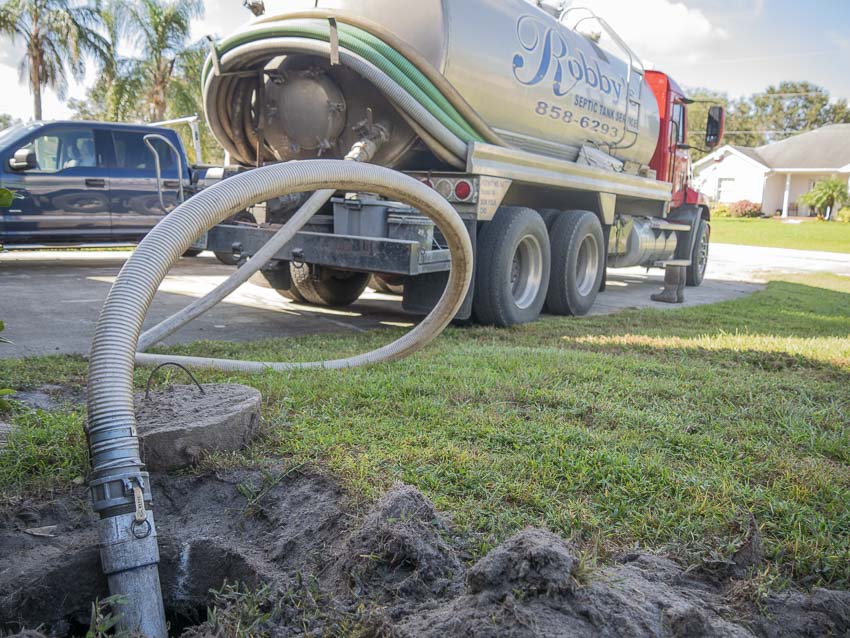All About Stillwell Septic And Grading
All About Stillwell Septic And Grading
Blog Article
The Single Strategy To Use For Stillwell Septic And Grading
Table of ContentsA Biased View of Stillwell Septic And GradingNot known Facts About Stillwell Septic And Grading8 Easy Facts About Stillwell Septic And Grading DescribedHow Stillwell Septic And Grading can Save You Time, Stress, and Money.Stillwell Septic And Grading for BeginnersRumored Buzz on Stillwell Septic And GradingIndicators on Stillwell Septic And Grading You Should Know

Property owners ought to additionally enlighten themselves on the basics of septic tanks to ensure they make informed decisions throughout the setup process - Septic Service, Maintenance and Installation. Septic tanks are a vital part of numerous homes that are not connected to a metropolitan drain system. They are developed to deal with and throw away family wastewater on-site
The septic tank is a large, underground container made of concrete, fiberglass, or plastic. The storage tank divides the strong waste from the fluid waste.
Things about Stillwell Septic And Grading
Along with regular upkeep, home owners should additionally be mindful of what they purge down their drains pipes. Items such as grease, oil, coffee grounds, and feminine hygiene products can clog the system and trigger back-ups. It is likewise essential to save water and prevent straining the system. Straightforward measures such as dealing with leaky faucets and bathrooms, installing low-flow showerheads and commodes, and expanding washing loads can help in reducing water usage and extend the life of the septic system.
The topography of the website is additionally reviewed to guarantee that the septic tank is mounted at the appropriate altitude. https://peatix.com/user/21382337/view. The system should be mounted at a higher elevation than the surrounding location to avoid contamination of the surrounding environment. Obstacles are the minimum distances needed by regulation between the septic system and various other structures or functions such as wells, structures, and property lines
The recommended altitudes of the system are determined based upon the outcomes of the dirt analysis and topography examination. The elevations will ensure that the septic system operates appropriately, and wastewater is effectively dealt with - Septic Tank Repairs. In verdict, a site analysis is an essential step in septic system setup. It guarantees that the septic tank is set up in the most optimal area, thinking about the dirt, topography, and setbacks.
Stillwell Septic And Grading - An Overview
Before installing a septic tank, homeowners need to get authorizations and conform with guidelines. Some of the authorizations and policies that house owners need to think about consist of:: Property owners require to acquire a permit from the regional wellness department or building division before installing a septic system.
Some towns may call for a minimum whole lot dimension for septic system installation.: House owners require to abide with environmental laws when setting up a septic system. http://peterjackson.mee.nu/do_you_ever_have_a_dream#c1997. Some states may need an environmental influence assessment before setting up a septic system.: Property owners need to comply with construction laws when installing a septic system.
The Basic Principles Of Stillwell Septic And Grading
Some towns may require routine inspections and pumping of the septic tank. It is vital for homeowners to obtain permits and abide with policies prior to setting up a septic system.
One of the most crucial factors to take into consideration when choosing a septic system is the size. A sewage-disposal tank that is as well small for the home's needs will certainly call for more regular pumping, while a container that is too big can cause extreme water buildup and potential system failure. A basic guideline is that the tank needs to have the ability to hold at the very least 2 days' well worth of wastewater.
Stillwell Septic And Grading Things To Know Before You Get This

It's additionally essential to take into consideration the type of system the septic container will be utilized with. There are 2 main types of septic systems: gravity and stress.
The Best Strategy To Use For Stillwell Septic And Grading
Overall, choosing the right septic storage tank for a home is an important choice that needs mindful consideration. Before installing a septic container, homeowners have to take specific actions to prepare for the installment process.
Below are some essential precaution to comply with: Wear safety gear: Property owners should put on safety gear, such as handwear covers, boots, and safety helmets, to stop injury throughout the setup procedure. Stay clear of electrical lines: House owners should prevent excavating near electrical lines to avoid electrocution. Use caution when operating heavy machinery: Property owners have to utilize care when running hefty machinery to stop crashes and injuries.
The Facts About Stillwell Septic And Grading Uncovered
By complying with these vital steps, property owners can make sure an effective septic storage tank installation process. Sewage-disposal tank installation is an essential process that calls for careful planning and execution. Property owners who are mounting a sewage-disposal tank for the very first time should recognize the crucial steps entailed in the process to ensure that their septic tank operates effectively and efficiently.

Report this page